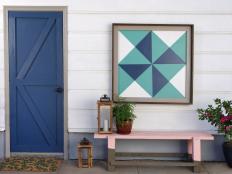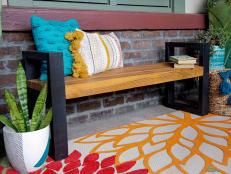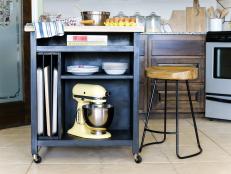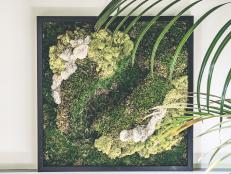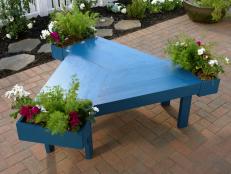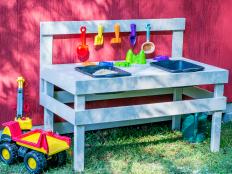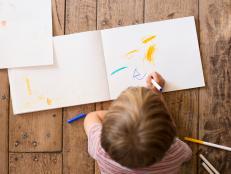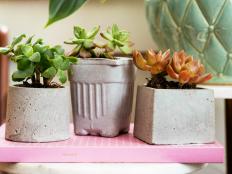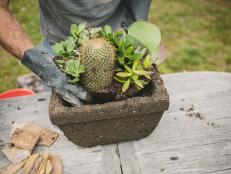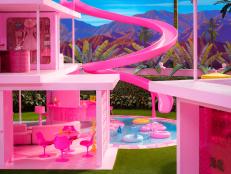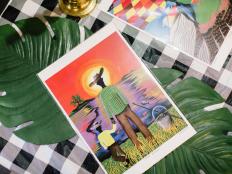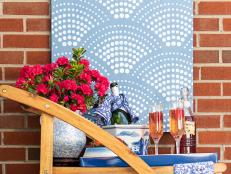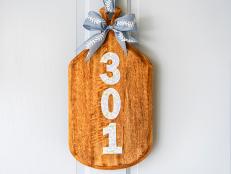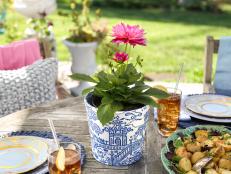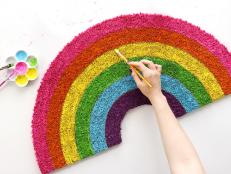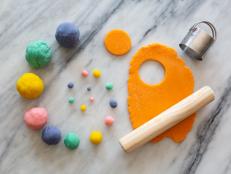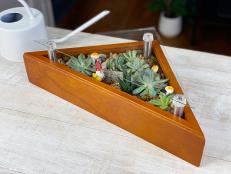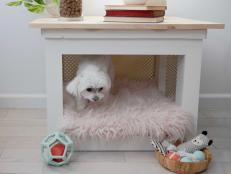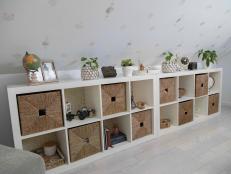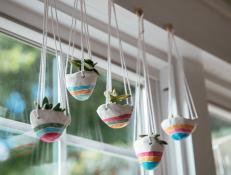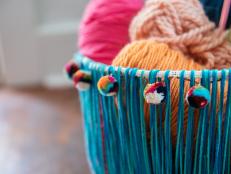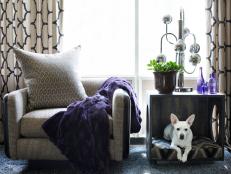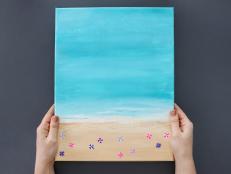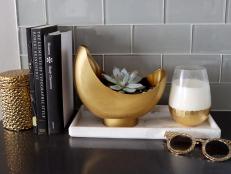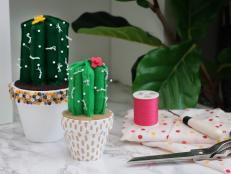How to Build Wooden Deer for Outdoor Decor
One sheet of plywood = two spirited animals for your yard.

Any real-life buck would surely give this faux duo a solid hoof-five, and if you fill your front yard with plywood deer during the winter holiday season, your real-life neighbors will think your DIY skills are pretty rad, too. This outdoor deer/reindeer decor does great things for our curb appeal, and I’m happy that we’ll be able to use for years to come.

Emily Fazio
There are a few big perks to this project that are worth pointing out:
- The deer themselves are simplified into a construction that fits on a single 4x8 sheet of plywood.
- Each deer only demands three cut pieces. Nothing puzzling about it, and not many opportunities for error.
- The joints are as easy to assemble – no hardware, no glues.
- They disassemble easily too, and you’ll be able to store them stacked flat in the off-season.
Download this free template to get started and follow the steps below to bring your own outdoor deer to life.
Materials and Tools
- (1) 3/8" 4' x 8' sheet of plywood
- free template for two deer
- drywall square (or comparable 4’ straight edge)
- utility bucket (12” diameter at opening)
- pencil
- jigsaw
- palm sander
- stain or paint (optional)
Step 1: Transfer the Template Pattern
When you’re at the hardware store you’ll realize how many plywood options there are, so just make sure you select a piece that’s at least 3/8” thick for durability. Stain-grade plywood is optional, especially if you’re going to paint the finished products. Make your pick, bring it home, and lay it flat on the floor or a large work surface.
Refer to the downloaded template. Notice how the template itself is marked off with a six-inch grid.

Use a drywall square to transfer those grid lines to your piece of plywood. Rather than trying to print the template to massive scale, if you can map out the pattern along the grid you will find it surprisingly easy to map out the deer for this project.


The utility bucket plays an essential role too. A one-foot diameter circle can be used for both chest and rear of each deer, as well as the hips and shoulders. It’s important to note that you can modify the curves and leg lines however you wish, but the design shown here will certainly get you started in the right direction. You can roughly sketch where the interlocking joints will fit together, but that is actually better addressed once the deer forms have been cut out.


Step 2: Use a Jigsaw to Cut the Plywood Deer
A simple jigsaw with a fresh blade will tear through the plywood with ease. Follow the lines you’ve cut to reveal six simple shapes – just three are used to build each deer.


Use a scrap piece of plywood and trim it to six-inch length. Six inches is half of the diameter of the 12-inch circles you formed using the bucket, and you’ll use that piece of scrap to align exactly where you want the legs to fit onto the body of each deer. On each leg, use the scrap six-inch plywood to mark from the top of the hips/shoulders to the center of the circle. You will cut that sliver of wood away. Do the same to the body of the deer, cutting from the bottom of the body upwards so that the legs will join the body.



Step 3: Dry Fit the Deer
Do a dry fit to test out how your deer look. No glue required at any point during this project – the body will balance on top of the legs and can be easily disassembled for flat storage in the off-season.

How’s it look? If any of the joints need to be corrected, widened or otherwise tweaked, now’s the time to do it. If you want to modify the shape of the deer in any way, once you see it assembled it’s a lot easier to plan those adjustments. Remember that you can always cut a little more off, so take your time and get it perfect.
Step 4: Sand and Stain (or Paint) the Plywood
Use a palm sander to smooth out all cut edges as well as the flat surfaces of the deer. The sandpaper will not only remove splinters, but it’ll eliminate your pencil lines as well as any manufacturer markings that were sold printed on the plywood product.


Stain and paint are optional. You might really like the look of it natural once you see it, but I took my duo dark brown with a semi-transparent chocolate-brown stain. Note that I didn’t purchase “stain grade” plywood but it still looked really nice. Some transparency was evident, and they'll look fantastic against the snowfall.

If you choose, I added a rounded accent to the tip of the male’s nose. My kids insist on converting him to Rudolph, which is why I included it in the template.
Enjoy the winter season with these friendly deer poised in your yard.








